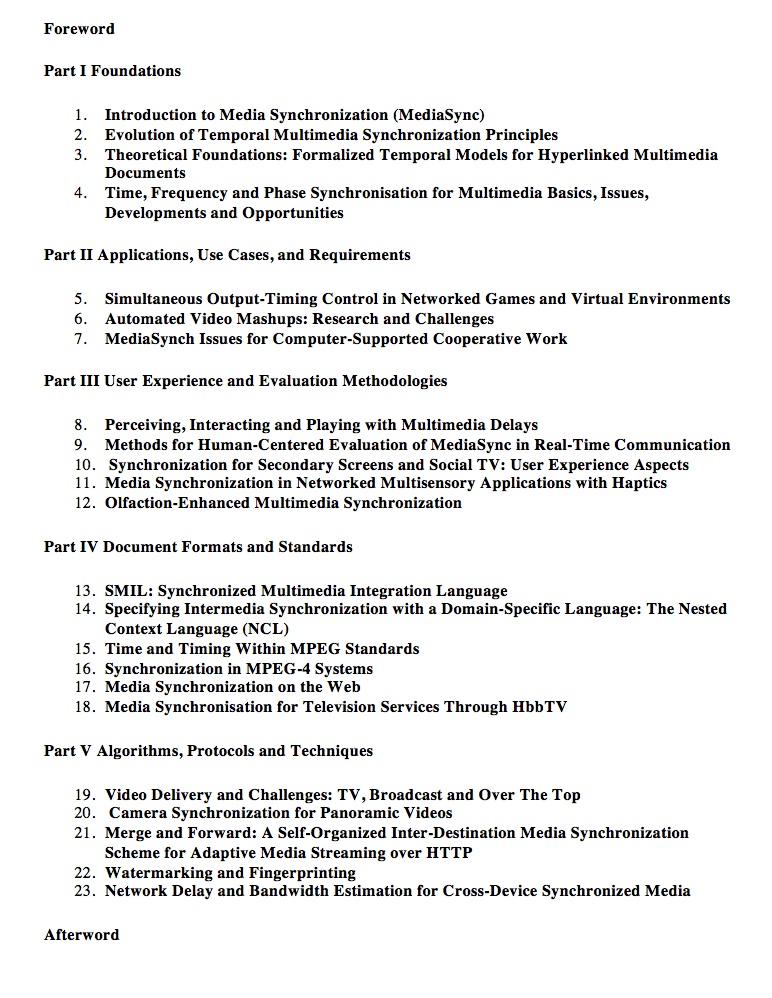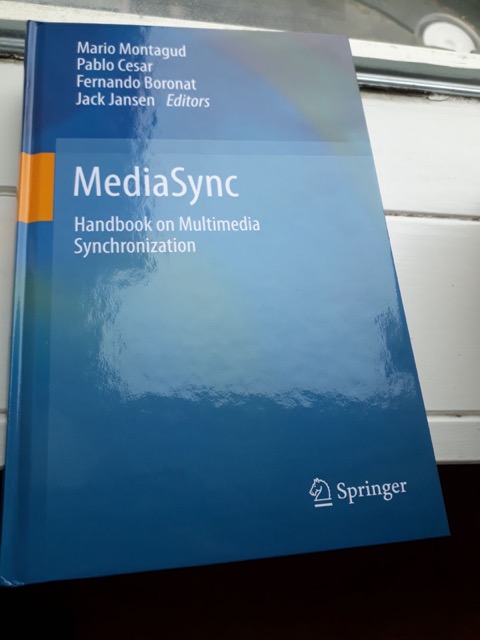MediaSync: a new handbook
PABLO CESAR (above, right, with co-editor Jack Jensen) from 2-IMMERSE partner CWI, Amsterdam, celebrates the publication of a new edited collection from Springer:
In March 2015, Springer approached my colleagues and me because of our workshop on Media Synchronization at the ACM International Conference on Interactive Experiences for TV and Online Video (ACM TVX):
I do hope you will forgive me for contacting you out of the blue. The topic area of the workshop looks really interesting and I wonder whether you might want to consider using the material discussed as the basis for an edited book.”
I thought that it was the right time, and the right publisher, to edit such a book. A scholar or practitioner interested in media synchronization needed to find their way from a set of scattered works. Given the number of disciplines considering this research area (from human factors to networking and from multimedia systems to document engineering), not all the works were consistent in terms of concepts, definitions and assumptions. I believed an approachable overview was needed, covering the broad media synchronization area from different angles and perspectives.
After three years, tons of hours, thousands of emails, several delays, and some frustration, the book MediaSync: Handbook on Multimedia Synchronization was in my mailbox. The result: over 60 authors, 23 chapters, 679 pages, 241 illustrations, 193 colour illustrations, 60 authors; a foreword by Ralf Steinmetz and an afterword by Dick Bulterman.
Some of the benefits of the volume include:
- A unique reference and perfect companion book about the fascinating media synchronization (mediasync) research area
- Provides a comprehensive overview of the mediasync research area from complementary perspectives, such as theoretical foundations, available technologies, use cases, standardization efforts and experimental studies
- Paves the way for overcoming remaining challenges towards the deployment of next-generation multimedia systems
- Includes chapters from the most representative and influential experts in this area


Summary
This book provides an approachable overview of the most recent advances in the fascinating field of media synchronization (mediasync), gathering contributions from the most representative and influential experts. Understanding the challenges of this field in the current multi-sensory, multi-device, and multi-protocol world is not an easy task. The book revisits the foundations of mediasync, including theoretical frameworks and models, highlights ongoing research efforts, like hybrid broadband broadcast (HBB) delivery and users’ perception modeling (i.e., Quality of Experience or QoE), and paves the way for the future (e.g., towards the deployment of multi-sensory and ultra-realistic experiences).
Although many advances around mediasync have been devised and deployed, this area of research is getting renewed attention to overcome remaining challenges in the next-generation (heterogeneous and ubiquitous) media ecosystem. Given the significant advances in this research area, its current relevance and the multiple disciplines it involves, the availability of a reference book on mediasync becomes necessary. This book fills the gap in this context. In particular, it addresses key aspects and reviews the most relevant contributions within the mediasync research space, from different perspectives.
Mediasync: Handbook on Multimedia Synchronization is the perfect companion for scholars and practitioners that want to acquire strong knowledge about this research area, and also approach the challenges behind ensuring the best mediated experiences, by providing the adequate synchronization between the media elements that constitute these experiences.
READ MORE

